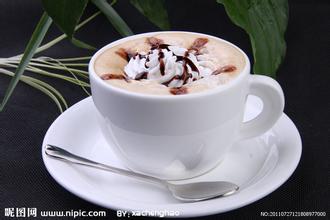Introduction to the characteristics of the refreshing and elegant Cuban Crystal Coffee Flavor Manor
The country is divided into 15 provinces, one special zone, and 168 cities under the province. [3] the names of the provinces are as follows: Binaldrio (Pinar del R í o), Artemisa (Artemisa), Mayabek (Mayabeque), Havana (Provincia de la Habana, capital) Established for provincial cities), Matansas (Matanzas), Cienfuegos (Cienfuegos), Viaclara (Villa Clara), Sancti Spiritus (Ciego de á vila), Camag ü ey (Camag ü ey), Las Tunas (Las Tunas), Holguin (Holgu í n), Grama (Granma), Santiago (Santiago de Cuba)
Havana, the capital of Cuba
Havana, the capital of Cuba
, Guant á namo (Guant á namo) and Youth Island District (Municipio Especial Isla de la Juventud). Except for the provincial capital of Havana, the provincial capital of Havana, the provincial capital of Viacra, the provincial capital of Santa Clara (Santa Clara), the provincial capital of Grama, the provincial capital of Bayamo, the provincial capital of Mayabek, San Jose Delas Lajas, and the capital of the Special Administrative region of Youth Island, Nueva Gerona, the provincial capitals are all 370km long with the longest river of Cuba, R í o Cauto, with the same name. [1] Cuba has more than 200 rivers and thousands of streams, most of which run north-south, so the current is shallow and fast. The Cato River, which flows east-west to the north of the Maestra Mountains, is the largest river in Cuba, but it is only 370 kilometers long and is the only navigable river in Cuba. Cuba's coastline is tortuous, generally steep in the north and flat in the south, with many good ports. Almost all of them are bays in the shape of pockets and bellies, which are very beneficial to shipping. The important bays are Havana Bay, Nippe Bay, Guantanamo Bay, Santiago Bay, Sienfugos Bay, Onda Bay and Matansas Bay and so on.
Climate
Most of Cuba has a tropical rain forest climate, only the southwestern coastal leeward slope has a savanna climate, with an annual average temperature of 25 ℃. Except for a few areas, the annual precipitation is more than 1000 mm.
With fertile land, humid climate and abundant Rain Water, Cuba can be called a natural treasure land for coffee cultivation. The suitable natural conditions provide a favorable natural environment for the growth of coffee trees. Coffee is well cultivated and developed here, and the best coffee growing area in Cuba is located in the Central Mountains. Because this area not only grows coffee, but also produces quartz, crystal and other precious minerals, it is also known as Crystal Mountain.
Crystal Mountain is geographically adjacent to the Blue Mountains of Jamaica, with similar climatic conditions and flavor similar to Blue Mountain Coffee, comparable to the Blue Mountains of Jamaica. Also known by the outside world as "the Blue Mountains of Cuba".
Crystal Mountain Coffee is synonymous with top Cuban coffee. Crystal Mountain Coffee is characterized by its large particles and bright green beans. Its flavor and taste features: full particles, uniform taste, with tobacco flavor. Crystal Mountain Coffee beans are typical island beans with a clean and delicate taste, slightly sour taste, not strong but long-lasting, with sweet melon and fruit aromas.
And the most authentic Crystal Mountain Coffee is Cuba's famous Cubita. It slightly contains wine-like bitterness and a touch of sweetness, and even a hint of tobacco, meticulous and smooth, fresh and elegant, almost perfect. It is known as the "noble and elegant princess" in coffee. The general taste of coffee is as strong as heavy metal music, while the taste of Cubita is as delicate and balanced as the softness of country minor. It will take you out of the restless urban hustle and bustle and come back to the quiet countryside to reflect the casual and comfortable side of life.
Crystal Mountain Coffee is the top representative of Cuban coffee, while Cubita is the top representative of Crystal Mountain Coffee. Cubita Amber is the coffee for the celebration of the 50th anniversary of the establishment of diplomatic relations between China and Cuba, and the coffee for the Shanghai World Expo-Cuba Pavilion. Noble women and elegant men are always infatuated. The same is true of Cubita. If you take a shallow taste, you will be deeply attracted by its taste and intoxicated with it, making people unable to extricate themselves.

Important Notice :
前街咖啡 FrontStreet Coffee has moved to new addredd:
FrontStreet Coffee Address: 315,Donghua East Road,GuangZhou
Tel:020 38364473
- Prev

Fragrant with fruit flavor Kenyan coffee variety characteristics taste manor boutique coffee bean flavor introduction
Kenyan coffee is mostly grown at an altitude of 1500m, 2100m, and is harvested twice a year. Its main feature is a distinct fruit aroma, the common fruit aroma is citrus. Kenyan coffee has a multi-layered taste and juice acidity, perfect grapefruit and wine flavor, moderate mellow, is the favorite of many people in the coffee industry. Kenya Coffee borrows Hollywood movies
- Next

Mafei Coffee Flavor Mafei Coffee Features Alishan Mafei Coffee
Alishan Mafeel coffee belongs to alpine coffee, which belongs to high-quality coffee in Taiwan coffee. It ranks first in Asia and eighth in the world. Coffee trees are mainly planted in southern Taiwan, such as Alishan Mountain in Chiayi County, Taiwan. Because Alishan Mountain is located at a high altitude, it is not only suitable for planting tea, but also more suitable for planting coffee. Belongs to coffee
Related
- Detailed explanation of Jadeite planting Land in Panamanian Jadeite Manor introduction to the grading system of Jadeite competitive bidding, Red bid, Green bid and Rose Summer
- Story of Coffee planting in Brenka region of Costa Rica Stonehenge Manor anaerobic heavy honey treatment of flavor mouth
- What's on the barrel of Blue Mountain Coffee beans?
- Can American coffee also pull flowers? How to use hot American style to pull out a good-looking pattern?
- Can you make a cold extract with coffee beans? What is the right proportion for cold-extracted coffee formula?
- Indonesian PWN Gold Mandrine Coffee Origin Features Flavor How to Chong? Mandolin coffee is American.
- A brief introduction to the flavor characteristics of Brazilian yellow bourbon coffee beans
- What is the effect of different water quality on the flavor of cold-extracted coffee? What kind of water is best for brewing coffee?
- Why do you think of Rose Summer whenever you mention Panamanian coffee?
- Introduction to the characteristics of authentic blue mountain coffee bean producing areas? What is the CIB Coffee Authority in Jamaica?

